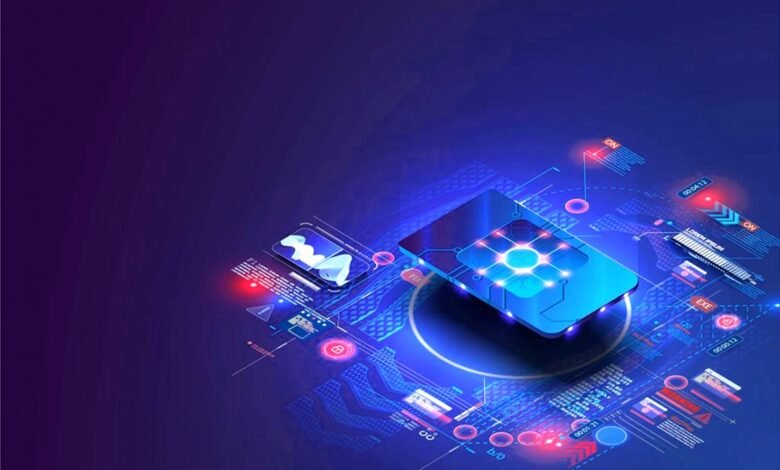What is the Difference between IoT SIMs and Phone SIMs?
This article examines the similarities and differences between IoT SIMs and phone SIMs in terms of coverage and roaming capabilities, security, user management and control, and extra features,

In comparison to phone SIMs, IoT SIM cards are tailored for smart devices, facilitating inter-device communication, ensuring global coverage, enabling over-the-air (OTA) feature updates, and offering enhanced functionalities. This facilitates the automation of operations for enterprises, enhancing operational efficiency and expediting scalability while upholding stringent security standards.
This article examines the similarities and differences between IoT SIMs and phone SIMs in terms of coverage and roaming capabilities, security, user management and control, and extra features, while elucidating why cellular IoT is an optimal connection solution for digital transformation.
Coverage
Consider your smartphone’s SIM card. A fixed-term contract of 12-24 months typically defines the conditions that tether the device to a specific network and operator. This contract entails a monthly payment for certain services, including data consumption.
Traveling outside the boundaries of your local network frequently results in substantial supplementary roaming charges. The charges fluctuate based on the roaming agreements established between your carrier and international networks.
- Consider the business ramifications of such an agreement for your IoT devices, which encompass:
- Obtaining and overseeing diverse connectivity providers on a country-specific basis while complying with disparate contracts and expenses.
- Terms established by network operators render the modification of contractual conditions a complex endeavour.
- Disadvantageous roaming fees when distributing devices throughout various areas
- Increase manufacturing and inventory expenses for the global production and distribution of products.
In comparison with rigid, expensive phone SIMs, IoT SIMs facilitate opportunities for your success.
- A single IoT SIM can access numerous local networks in various nations. This reduces the complexities involved in overseeing numerous contracts and SIM cards.
- IoT SIMs effortlessly transition between networks, prioritising the optimal available cellular network.
- Adapt your business requirements with a pay-as-you-use IoT-centric pricing model.
Security
Smartphone SIMs receive dynamic private IP addresses (IPv4) from the network upon connection, which may change regularly. Most IoT SIM service providers, however, employ static IP addresses alongside a virtual private network (VPN) to enhance security.
Static IP addresses persist unchanged until a device is deactivated or the network configuration is altered. This enables service personnel to remotely access the device, execute commands, analyze log data, or modify configurations.
However, the truth is that static IP addresses are more susceptible to vulnerabilities. A static IP address allows malicious entities to precisely identify the location of your server or device through network scanning, hence facilitating potential attacks.
Consequently, it is customary for IoT connectivity providers to offer a secure method for managing IoT devices, eliminating the want for static IP addresses, IP ports, or VPN and firewall equipment.
Control
Standard SIMs for consumer devices mainly lack user interfaces and administrative platforms due to minimal demand from the general user demographic. This indicates that you are overlooking critical insights regarding device operation and monitoring for irregularities.
To save expenses, you may consider defining parameters for data consumption and establishing an alert to automatically deactivate a rogue device that exceeds thresholds, reducing data expenditures.
Continuous, round-the-clock analytics and reports on connectivity, data volume, and device usage, along with the capability to manage and adjust these features, are supplementary advantages.
A management platform is essential for ensuring reliability, particularly in locations where access for service workers is restricted. These technologies facilitate multi-tenancy, allowing for the seamless deployment, pausing, resumption, or cancellation of your IoT SIM card at any moment.
Additional Features
Moreover, IoT SIMs include features that conventional smartphone SIMs lack:
- Comprehensive data encryption utilises the SIM as the foundational trust element, facilitating compliance with advancing worldwide data privacy and cybersecurity requirements.
- eUICC-enabled SIMs facilitate the technological upgrade of current or legacy device models without necessitating the replacement of existing infrastructure, as they are entirely backward compatible.
- Committed customer support to minimise wait times and ambiguity in issue resolution or expedite your IoT deployment.
Conclusion
The enhanced functionalities enable efficient device management and operational optimisation while ensuring the security and reliability of data exchanges are not compromised.







